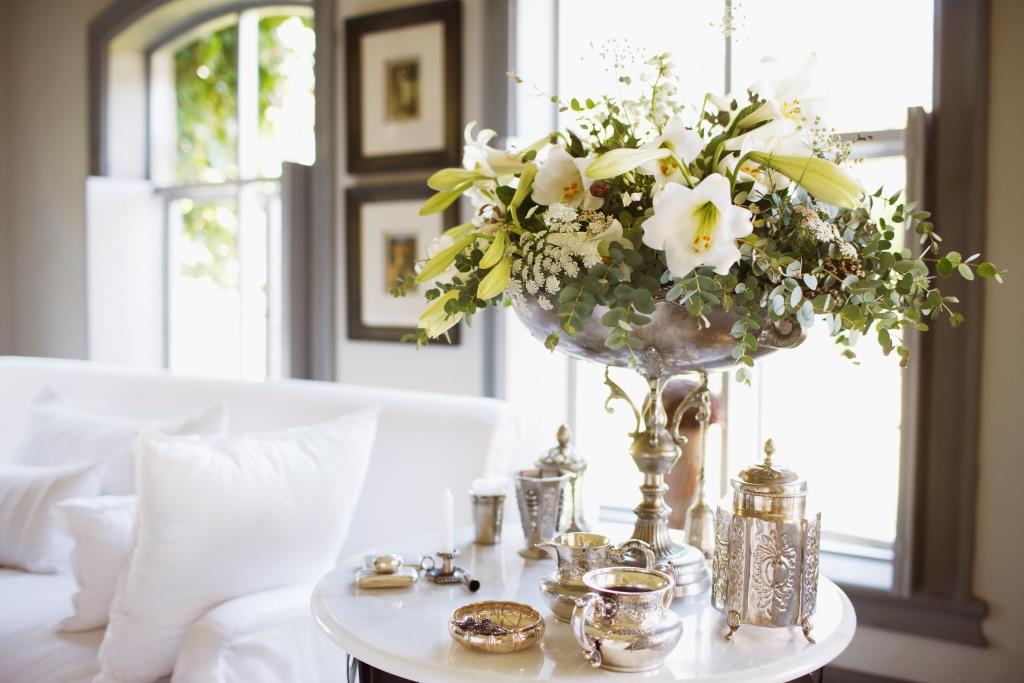925-855-3250
Question about what mortgage lenders can approve? Contact our loan agent in San Ramon.

How To Get Your Home Ready To Sell
If you plan to market it soon, you need to consider how to get your house ready to sell. Of course, that’s not obligatory, and many homeowners simply call a real estate agent when the time comes without even considering the subject. But, unless their homes are permanently in pristine open-house condition, they stand to lose thousands of dollars by ignoring some simple tasks that might boost their sale prices and improve their chances of finding buyers quickly.
Think Strategically
Most people have an emotional attachment to their homes, and many see them as a way of expressing their personalities. Forget all that. The work you do when you prepare to sell has two – and only two – objectives:
- To attract a buyer
- To optimize the sale price
Note the use of “optimize” there, rather than “maximize.” Given an unlimited budget, you could maximize your home’s sale price, but you probably don’t want to do that. You want to spend only the amount that gives you a quick return on your investment. In other words, when you’ll be moving out in a few months, it’s generally a mistake to spend $50,000 in order to boost the price by $30,000. It’s much better to spend a few hundred dollars, or $2,000 or $5,000 and increase that price by $1,000, $5,000 or $10,000.
There may be an exception to that. If your home has the sorts of problems that put off pretty much all buyers – most likely serious structural defects – then you may not be able to sell at all unless you bite the bullet and spend more than you can recover. If you’re in that position but lack the funds to carry out the necessary remedial work, you could see whether you’re eligible for a Title 1 home improvement loan, backed by the Federal Housing Agency. These are designed to help people in such circumstances, and smaller amounts (up to $7,500) can sometimes be made available relatively quickly and with minimum fuss and admin. Higher value Title 1 loans are available, but these come with longer lead times and more paperwork.
How to Get Your House Ready to Sell
If your home doesn’t have any major problems, the amount you should spend will depend on many factors, including your budget, the current state of your home, where it’s located and how your local property market is performing. Your goals are to get prospective buyers through the front door, and impress them with spaces that are clean, bright and fresh, and that they can imagine themselves living in.
This often means stripping out some of the things that make your house your home, and turning it into one that can appeal to the largest number of people. By taking out some “character” (not original features!), you present something closer to a blank canvas that allows potential buyers to use their imaginations to paint on their own lifestyles. Often, that involves packing up precious knickknacks and bulky items of furniture and putting them into temporary storage. You might also want to consider painting over bold colors and using more restrained hues. You’re not trying to suck out all the joy from the place, so don’t feel the need to go for brilliant white walls and strict minimalism: Just thin out the clutter, make the spaces seem bigger and use a modern, fairly neutral color palette.
The trick here is to be shameless in stealing other people’s ideas. Don’t feel guilty; they almost certainly stole them from someone else. By all means, buy some upscale decor magazines or check out some home-improvement TV shows. HGTV’s “Fixer-Upper” is a good source of inspiration, but don’t forget when to stop: you’re unlikely to be putting in french doors or knocking down internal walls.
Budget
Now is not the time to hold back. The potential is here to make a serious return on the money you invest in presenting your home in its best light. But at the same time, don’t forget the law of diminishing returns and focus on the jobs that will add the most to your property’s value. So look at your finances, decide how much you can afford for the project, and then spend it on the things that will make you most cash. If you live in an area where it takes awhile for even the most attractive homes to sell, remember some costs, such as those for storage, will increase over time, so build those into your budget. A 10 or 20 percent contingency to cover the unexpected is also a good idea.
How far that money goes will be largely determined by your ability and willingness to use your own labor. Don’t try to do stuff that’s better left to a professional, but challenge yourself to do as much as you can.
If you already have savings set aside for new items (a couch, maybe, or a rug) for your next home, consider buying them now to enhance the appeal of your current one. But don’t open any new credit accounts or add them to your credit card balances because that could affect your credit score – and therefore the rate you’ll be offered for your next mortgage

Selling Your Current Home?
Get Ready and Get Pre-Qualify Before Looking for New Home
Prioritize
If, right now, your home is essentially unsaleable owing to major structural problems, fixing those must be your first concern. Everyone else has a more mainstream list of priorities. Most of us quickly become blind to our own home’s drawbacks and defects, so see if you can get a friend or relative to tour your house with fresh eyes and alert you to issues. Just about everyone has in their lives people who are blunt to the point of rudeness, so try to recruit them for the job, and let them off the leash by inviting candor.
Remember: your first objective is to attract a buyer, and your first goal is to get prospective buyers through the front door. That means achieving what property professionals call “curb appeal,” the intention of which is to prevent prospective buyers pulling up outside and crossing you off their list of “maybe” homes without even getting out the car. So it’s all about making everything that’s visible from the road (front yard, driveway, front of your house) as attractive as possible. Think bright plantings and hanging baskets, a well-tended lawn and a perfectly maintained exterior to your building. Once that’s shipshape, other priorities include:
- No bad smells – Nobody knows how their own home smells except at the moment they walk through the door after a week or two’s vacation. So ask your blunt friends about unpleasant aromas associated with your dog/cat/tobacco/drains/lax cleaning habits.
- OCD levels of cleanliness – You need to get your house spotless throughout, but pay particular attention to bathrooms, kitchens and windows. If your OCD doesn’t involve housework, get in a cleaning crew – but wait until other tasks that are messy have been completed. From the day your home is offered until the one a sale is agreed, that level of cleanliness has to be scrupulously maintained by you or your crew.
- Declutter – You don’t need to eliminate them, but thin out ornaments. Move out bulky, unnecessary furniture that makes rooms look crowded and rarely used small appliances in your kitchen that make countertops look untidy. Rent storage or annex a kind neighbor’s or friend’s garage.
- Stay tidy – You may think untidiness is a sign of a creative mind, but it can stop buyers seeing how lovely your home is. Laundry, cosmetics, utensils, TV remotes, games consoles, paperwork … everything needs to be put away or neatly placed.
- Fresh paint in inoffensive colors – What’s not to like?
- Carpet, rug, drape and upholstery cleaning – Renting a machine and buying the fluids is unlikely to break the bank, and the difference it can make to the appearance and smell of tired and musty soft furnishings is often amazing.
- Neat yard and outbuildings – Your hottest prospects love the front of your home and its interior. Now’s not the time to show them a back yard full of foot-high weeds, abandoned kids’ toys and falling-down buildings.
 Those are the essentials, but if you have the time, energy and budget, by all means do more to freshen up anything in your home that’s tired. For example, shabby kitchen cabinets can be painted or stained, and dated bathroom and kitchen tiles can be made like new with specialist tile paint and new grouting.
Those are the essentials, but if you have the time, energy and budget, by all means do more to freshen up anything in your home that’s tired. For example, shabby kitchen cabinets can be painted or stained, and dated bathroom and kitchen tiles can be made like new with specialist tile paint and new grouting.
Phew! That’s a whole lot of work. But, if they add thousands to the value of your home, those hours could turn out to be some of the most financially rewarding you’ve ever spent. Time to ask yourself how you can get your house ready to sell.
